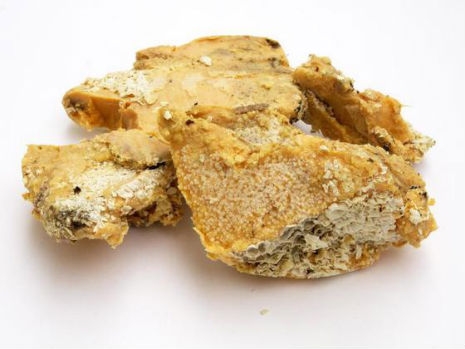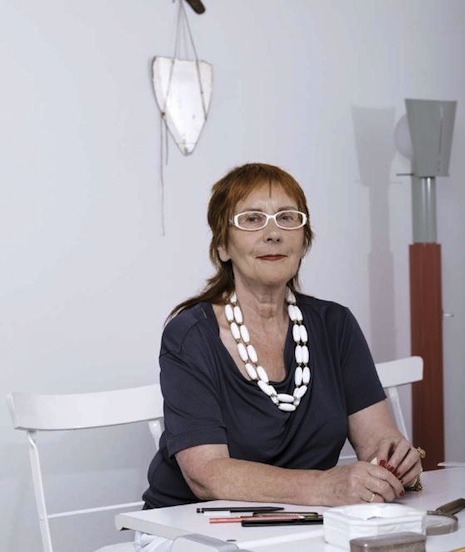
Noted German Fluxus and “happening” artist Joseph Beuys focused on two substances above all in his art: felt and fat. His use of the two materials purportedly stem from an incident Beuys experienced during World War II. In 1944, as a pilot of a Nazi “Stuka” dive-bomber, Beuys was shot down on the Crimean Front. According to Beuys, he was saved when a group of nomadic Tatar tribesmen wrapped his body in animal fat and felt and nursed him back to health: “....the tail flipped over and I was completely buried in the snow. That’s how the Tartars found me days later. I remember voices saying ‘Voda’ (Water), then the felt of their tents, and the dense pungent smell of cheese, fat and milk. They covered my body in fat to help it regenerate warmth, and wrapped it in felt as an insulator to keep warmth in.” This account has never been corroborated; contemporaneous reports insist that Beuys was found by a German search commando and that there were no Tatars in the village at that time.
Still, for Beuys this tale served as an originating myth, and in his many “Aktionen” (actions, happenings) he would use the two materials again and again. One of his most famous works is his Filzanzug (Felt Suit, 1970); he often wore a felt suit and a felt hat in everyday life. According to the Tate Gallery in London, “Beuys used triangles of fat in both his sculptures and ‘actions’. From around 1963, he would use wedges of fat or felt to mark the boundaries of a space when performing an ‘action.’”
His best-known fat-based artwork is called Fettecke (Fat Corner, various years). According to Antidiets of the Avant-garde by Cecilia Novero,
Beuys “melted” or cooked butter (or margarine) and worked with it in its multiple states, from hard to soft to liquid. When warm, fat expands and moves; when cold or frozen, it becomes hard, heavy, and non-malleable. Energy is not only necessary to transform fat but also is the force that the artist uses to sculpt it. As Beuys reported of two of his most famous fat objects of the sixties, Fat Corner (Fettecke, 1960) and Fat Chair (Fettstuhl, 1964), fat in the former has hardened in the form of a quadrilateral, where fat on the chair “is not as geometrical as the fat corner, rather is preserves some chaotic character.” For its malleability fat becomes the material that best expressed the ideas of transformation from chaos to form, and vice versa, ideas that for Beuys exemplify processes of life, especially human social activity. Human action can be organized according to the state of matter, that is, of fat.
As part of the Düsseldorf Quadriennale and the Museum Kunstpalast’s current show “Art and Alchemy,” Markus Löffler, professor of art in Bremen, and two artists named Andree Korpys and Dieter Schmal took up the challenge of creating booze out of the Fettecke: they “used a four pound chunk of the over 30-year-old sculpture and a dusting of blue pigment from an Yves Klein edition to distill a 160 proof alcohol, which was then cut down to around four liters of 100 proof schnapps.” According to Löffler, “The taste is reminiscent of Parmesan. ... It stays with you for a long time afterwards.”

Remnants of Beuys’ Fettecke
According to artnet, visitors to the museum were also offered a drop or two of the liquor. After so many years, the fat had certainly turned rancid, a fact that did not bother the artists responsible for the Fettecke schnapps. “You can make liquor out of anything,” Loeffler said. Apparently, the three artists have already distilled (and presumably consumed) liquor made from books and a bust by Dieter Roth.
The creation of the schnapps, which seems perfectly in keeping with Beuys’ own sensibility, did not delight Beuys’ widow and daughter, Eva and Jessica Beuys:
[Eva Beuys] called the performance “crap and stupid,” speaking to Germany’s Bild on Wednesday. She claimed that her late husband’s rights have been violated by the destructive act, and said that after hearing the news, she had gotten “red cheeks out of anger.” Eva Beuys said that the museum failed to inform her or her daughter Jessica about the performance, which she went on to call an act of slander against her husband.
Though she refused to comment on the performance itself and said she won’t sue the institution or the “stupid and crudely unfeeling” artists who initiated the performance, the widow had some choice words for Stüttgen. She claims that after rescuing the now-destroyed portion of Fettecke, Stüttgen made her sign a document confirming the work’s authenticity and subsequently showed it in exhibitions. “Now,” she tells Bild, “He has made a farce of the work and a farce of my husband who can no longer defend himself.”

Eva Beuys